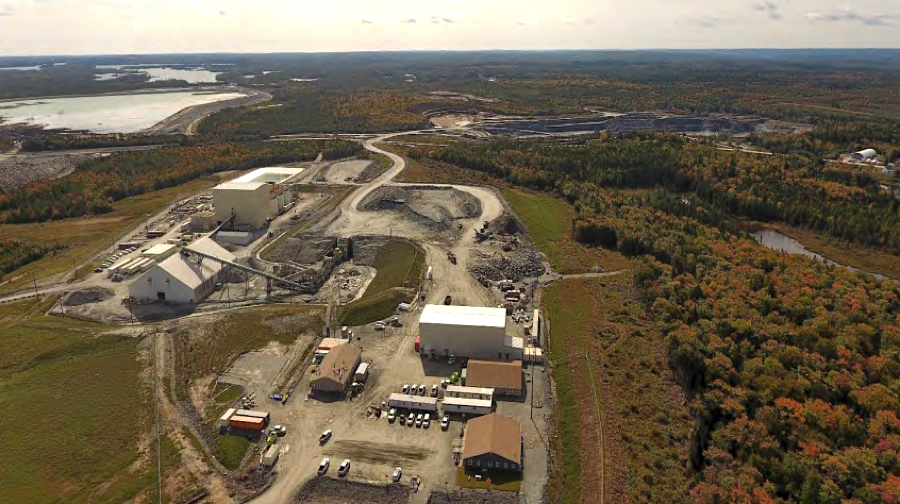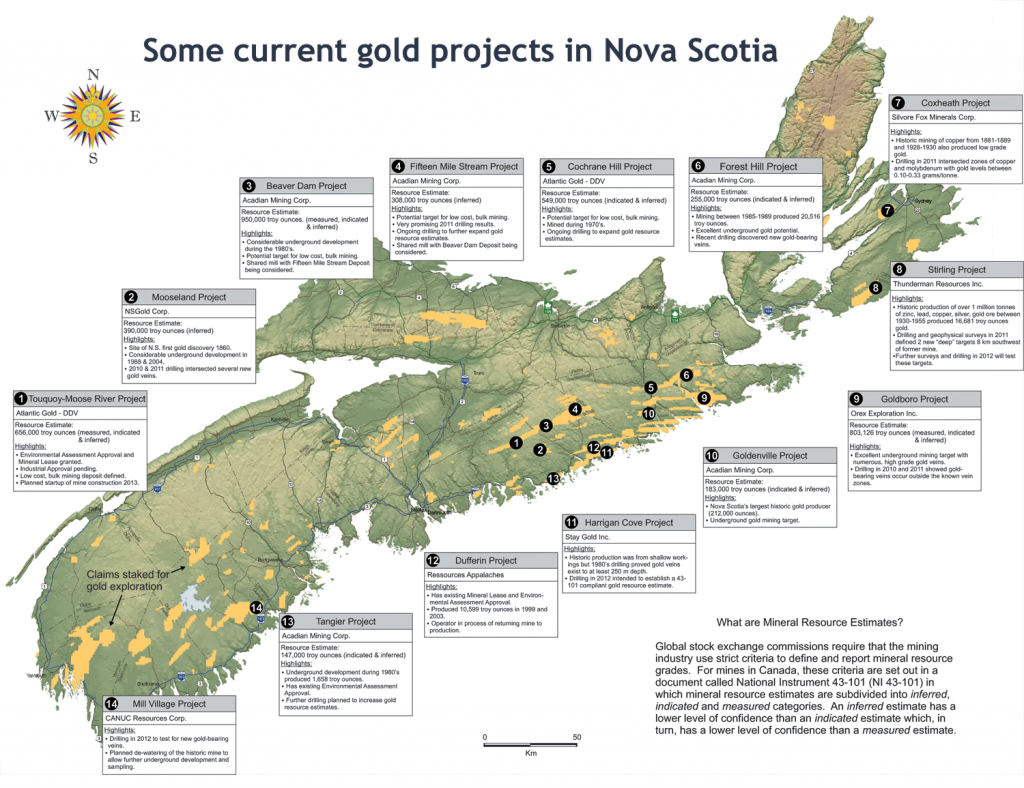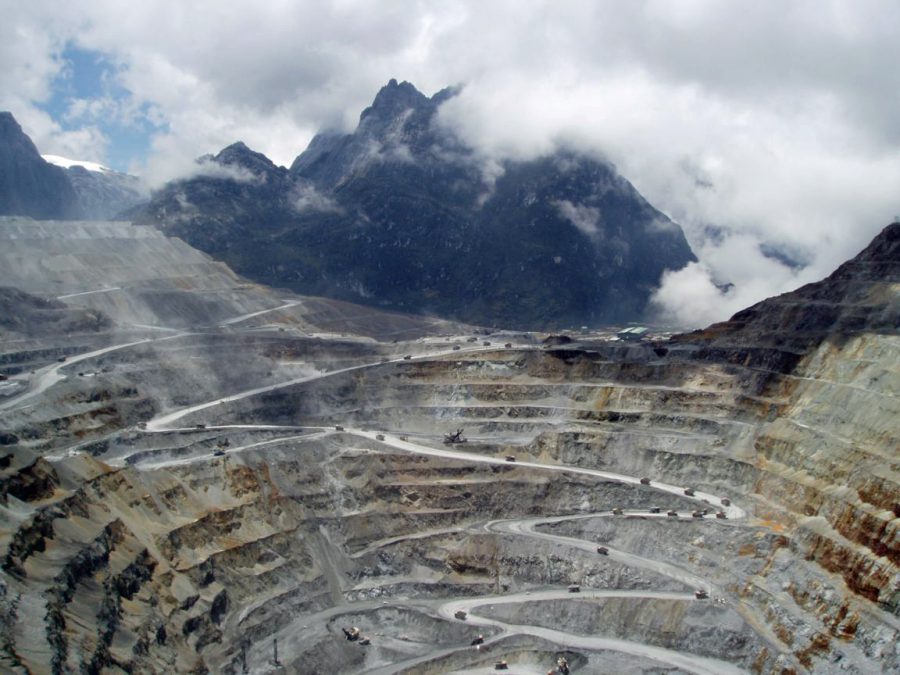Gold rush in Canada’s Nova Scotia unearths opportunities and criticism

While the Canadian province of Nova Scotia has been attracting local and international companies lured by its untouched gold riches and the easy access to most assets, located nearby existing highways, some groups warn of potential impacts to watersheds and communities.
“Nova Scotia has a golden opportunity to create jobs in gold mining,” Sean Kirby, executive director of the Mining Association of Nova Scotia (MANS) said while opening an industry conference last week.
“One gold mine opened in 2017, four are in the permitting process and there is a lot of exploration taking place,” Kirby noted. “This activity is bringing hundreds of millions of dollars in investment to the province and creating hundreds of jobs for Nova Scotians, mainly in rural areas.”
But locals groups, including the Ecology Action Centre, argue the amount of potential jobs and revenue to be created wouldn’t offset the damage caused to waterways and unique wilderness of the province.
“One gold mine opened in 2017, four are in the permitting process and there is a lot of exploration taking place.”
Sean Kirby, executive director of the Mining Association of Nova Scotia
They also argue that there has been a lack of public consultation on the rising number of open-pit gold mines, adding that a significant number of exploration companies have been found at fault of abiding by the province’s regulations.
The violations revealed in documents released to CBC News this summer include drilling without approval, excavating outside their licence areas and, in some cases, cutting trees right down to a lakefront.
Miners and researchers alike agree that modern mining techniques and rules allow for the responsible extraction of minerals with little to no negative effects on the surroundings.
Nova Scotia’s 21st century gold industry also differs from the underground operations during the gold rush lived in the province during the late 1800s and early 1900s in other ways. Geologists are now seeking tiny flecks of the precious metal in the folds of ordinary, “host” rock that held the quartz, rather than exclusively in the quartz veins that characterize underground gold mines.
Northern Shield Resources is a good example of the new trend. The company recognized a unique opportunity that came its way in 2017, which led to the discovery of a large, low sulphidation epithermal gold system in Nova Scotia, the first of its kind in the province.

Such systems area highly prized for their potential to host “bonanza” gold and silver grades. “New district-scale opportunities do not arise very often, especially within sight of the Trans-Canada Highway,” Ian Bliss, president and chief executive said at the conference last week.
The company has just acquired two new epithermal discoveries made by local prospector Patrick Bellefontaine in Cape Breton.
Bliss noted that Australian miners are picking up these opportunities much faster than Canadians and cited the recent acquisition of Atlantic Gold by Australian gold producer St. Barbara (ASX: SBM) as an example.
Geologists are now seeking tiny flecks of gold in the folds of ordinary, “host” rocks rather than exclusively in the quartz veins that characterize underground gold mines.
Through the C$722 million deal, the Melbourne-based company gained access to the Moose River complex , which comprises one producing open-pit (Touquoy) and three others in development (Beaver Dam, Fifteen Mile Stream and Cochrane Hill).
“Australian producers currently hold the upper hand in valuation, FCF generation, and market caché to purchase Canadian assets, many of which have struggled mightily of late,” BMO Metals analysts wrote at the time. “We view the consolidation of Australian and Canadian mid-tier miners as inevitable.”
The buyout came after Australian gold miner Newcrest Mining (ASX: NCM) acquired a copper and gold mine in British Columbia for $806.5 million in March and said it had the firepower for more acquisitions.
Based on MANS’ figures, the mining and quarrying industry employs about 5,500 Nova Scotians and generates $420 million annually in economic activity.
The number of mineral claims in the province doubled from 2017 to 2018 – most of it focused on gold. Exploration drilling in Nova Scotia surged 2,641% from 2016 to 2017 to over 200,000 metres drilled – again, most of it looking for the yellow metal, the mining association says.
More News
First Quantum pulls back from arbitration on Panama copper mine
Signals potential for more negotiations with the nation over the Cobre Panama mine that’s been shuttered for more than a year.
March 31, 2025 | 04:30 pm
Freeport-McMoRan lowers first-quarter gold sales forecast
The company said it expects first-quarter gold sales to be roughly 100,000 ounces below its prior forecast of 225,000 ounces.
March 31, 2025 | 03:41 pm
{{ commodity.name }}
{{ post.title }}
{{ post.excerpt }}
{{ post.date }}



Comments